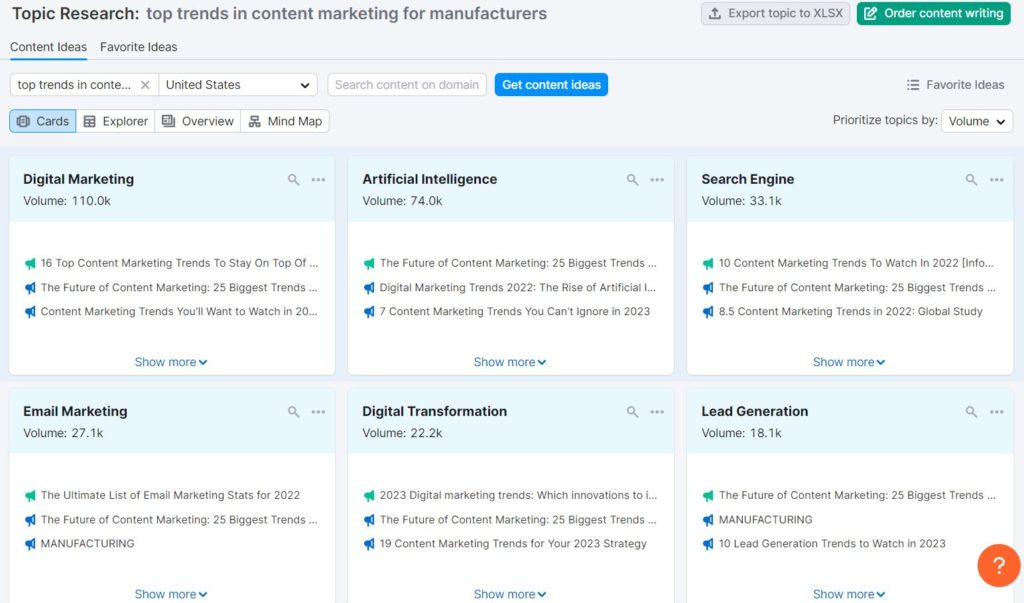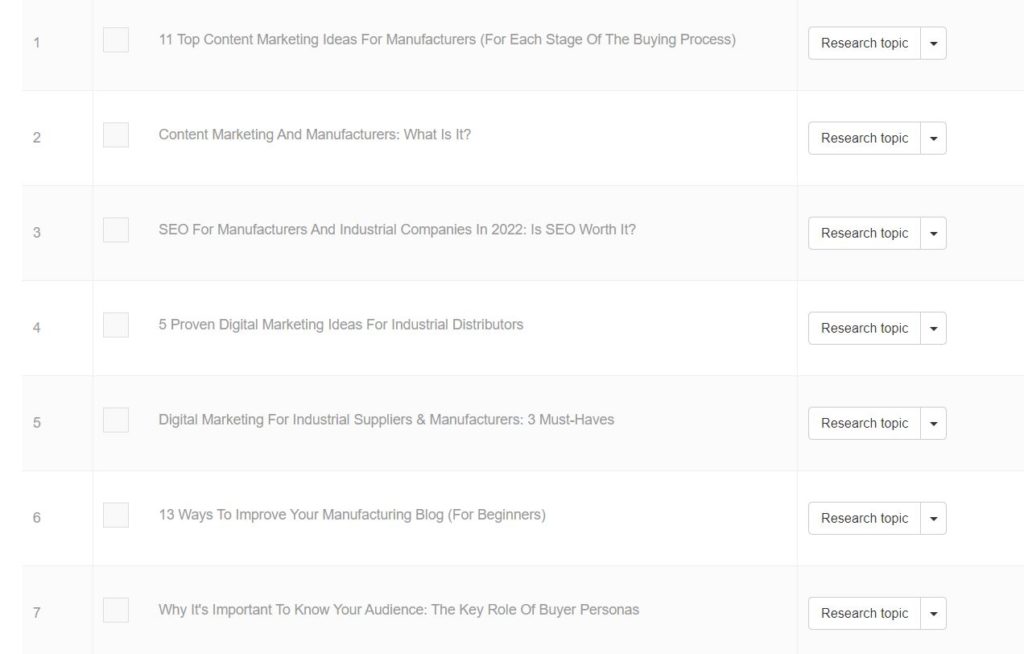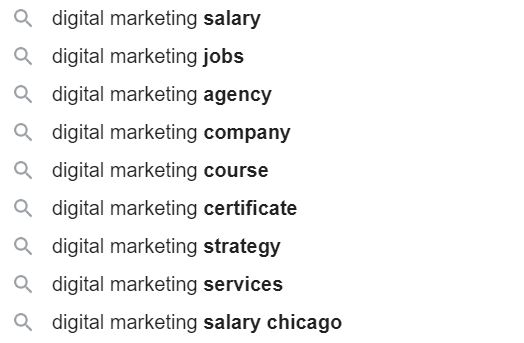What’s a business-to-business (B2B) content marketing road map look like these days? Overall, it’s not much different than it was 10 or even five years ago. But if you look closer, you’ll see subtle changes. The focus is on quality more than ever before. Churn and burn doesn’t win customers. It will only annoy them. And brands must work harder to make their content compelling and unique. Furthermore, they must promote their content to ensure prospective customers see it.
Let’s take a closer look at the B2B content marketing road map. I’ll cover the key changes to help you navigate them.
How has B2B content marketing evolved?
B2B content marketing isn’t new by any stretch of the imagination. It’s long been a staple among many businesses that sell to other businesses. They might not have called it content marketing. But they created and shared content to reach, connect with and engage prospective customers. Examples include:
- Articles
- Blogs
- Case studies
- Email newsletters
- Webinars
- White papers
No matter the format, the B2B content marketing road map followed the same path. It was informative and valuable. If done well, it wasn’t self-promotional. Businesses still create and share these assets, so what’s changed? As more information became available online, B2B buyers became smarter. They could spot poorly written content and sales pitches. Meanwhile, they began to seek and appreciate meaningful insights that helped them. And they began to rely on high-quality content that addressed their challenges.
Competition is putting more pressure on B2B marketers
Today, B2B buyers do most of their research online before they make purchasing decisions. And because content marketing is everywhere, businesses must work harder to be unique. Let’s explore how B2B marketers are staking their spots in the content marketing road map.
Quality outranks strategy every time
The No. 1 way B2B marketers beat back the competition is by producing quality content. In the Content Marketing Institute’s (CMI’s) 2023 B2B content marketing survey, 83% of respondents said they stand out by creating higher-quality content than their competitors.
Of course, quality can be subjective. For me, the baseline is the writing. If it’s written well and error-free, that’s a great start. It’s surprising how much published content misses the mark. Typos and grammatical and punctuation errors erode brand trust and dissuade prospective customers. Beyond that, top-notch content should have a:
Strong headline
Tease what the audience will learn and keep it short. Furthermore, tie it back to the content. For example, a blog post with the headline, “Drive revenue with data centers,” should deliver on that promise. The post should explain how data centers will help the targeted audience increase revenue. The headline is the first thing the audience will see, so make it count.
Bad headline: “Data centers are everywhere.” OK, terrific. It might be true. But so what? What’s in it for the audience? Assuming data centers are a hot topic for prospective customers, what do they need to know? What are their burning questions or concerns?
Let’s try a better headline: “Unexpected benefits of data centers during a global crisis” piques curiosity. It has an element of surprise, which draws people in. What were the benefits? Who did the crisis affect and what was it? Was there a solution?
Solid introduction
Next, set the stage with a brief overview of the topic and what the audience can expect to learn. It should be enticing enough to encourage the audience to keep reading. Avoid revealing everything or getting mired in details. A few sentences is fine unless your topic is complex.
On the flip side, here’s an example of a bad introduction. Let’s assume the topic is about the unexpected benefits of data centers during a crisis:
“Data centers can serve one company or multiple companies that share the infrastructure and costs. Each model has unique challenges.”
Huh? The audience expects an overview about data center benefits. Starting with the types of data centers and related challenges is confusing. In short, it’s not related to the topic.
Instead, aim for a better introduction. Here’s an example:
“The COVID-19 pandemic drove growth in data centers as companies across the globe shifted to remote work. Data centers provide the technology and connectivity that distributed workforces need. But the companies gained more than capacity. They could offer customers new services. These services created revenue opportunities, among other unexpected benefits.”
Logical narrative
A narrative tells the story. It connects events so the audience can connect the dots. Think of it as flow. Therefore, a story should flow smoothly with a clear beginning, middle and end. Prospective customers expect you to guide them.
Rather than invent a narrative about data centers, I’ll share a real one. It comes from John Deere, a content marketing pioneer. This article about Black children learning how to farm appears in The Furrow, a magazine the company first published in 1895.
The story is about Kamal Bell and his lifelong passion for farming. The narrative connects his children’s interest in farming with his own experiences and those of his students at an agricultural academy. In sharing his knowledge and skills, he’s inspiring a new generation to pursue farming.
Fabulous ending
Finally, every piece of content marketing needs a great conclusion that pulls all the pieces together. Typically, this is a summary of the high-level points. The ending may consist of one or more paragraphs. It can also include a link or contact information for those who want to learn more.
Let’s go back to The Furrow article as an example. Toward the bottom, Bell recaps his vision for the academy:
“This program is about encouraging kids to excel. They learn how to solve problems … and that they can accomplish anything they put their mind to.”
Quality is more than well-written content
High-quality content isn’t simply error-free, well-crafted and packaged nicely. It must:
- Support your business and marketing goals. Every piece of content you create should tie back to your overall strategy. Whether you want to build brand awareness, attract top talent or get prospects to sign up for your webinars, make sure you’re in alignment.
- Be optimized for search. If your audience can’t find your content, it won’t get exposure. And it won’t drive traffic to your website. By optimizing your site and your content for search engines, you’ll improve your company’s visibility.
- Serve your audience. Prospective customers want answers to their questions and solutions to their problems. Quality content educates, informs and inspires. If you don’t provide valuable content for your audience, your competitors will.
B2B marketers hit home runs with originality
The second most important way B2B marketers stand out is by covering topics that competitors ignore. In the CMI survey, 72% said they use this strategy to get eyes on their content marketing. Coming up with fresh ideas for content takes effort and ingenuity. Read on for 10 ways that can help.
1. Use a content idea generator.
Content idea generators can help you brainstorm topics based on keywords and subjects. These tools search the web for trending topics and suggest different angles you can take. Some are free. Others provide limited information without a paid subscription. Search for “content idea generator” online and you’ll get a ton of results. They’re all slightly different, but the basic premise is the same. Here are two examples:
Semrush Topic Research tool
Let’s look at the Semrush Topic Research tool first. In the example below, I entered the topic, “top trends in content marketing for manufacturers.” Next, I hit the “Get content ideas” button. The tool displays “cards” of relevant topics from the web.

You can click on each card to view more helpful information. You can view the best-performing articles for that topic, headline ideas, “people also ask” questions and related searches. The resources in this tool are extensive. Note that you’ll only get two free searches without a trial or paid subscription.
SEO Review Tools Content Idea Generator
Next, I’ll show you an example from the SEO Review Tools Content Idea Generator. This free tool is easy to use. While it doesn’t provide the detailed information that Semrush does, it’s a good starting point for developing topics. In the example below, I entered, “content marketing ideas for manufacturers.”

By clicking on “Research topic,” you’ll see the headlines that are trending in Google search and social media for your topic. After that, you can brainstorm related topics or new twists on the ones others are covering.
2. Prioritize and embrace search engine optimization (SEO).
Including keywords in your website content helps to improve your visibility in search. Similarly, it can help you develop new topics for your content marketing. Keyword research reveals what your prospective customers are searching for and why they’re searching for it.
For example, if you work for a digital marketing agency, your keywords could include digital marketing strategy, digital marketing services and digital marketing courses. You can use Google’s auto suggest and related searches to discover the keywords people are looking for.

3. Form an editorial board.
It’s old-school. But the onus for generating content ideas shouldn’t fall on one person. Bringing company stakeholders from different departments together can get the creative juices flowing. It’s easier to bounce possible topics off one another than it is to try to make a list on your own. To boost participation, try gamification. For example, give points or badges to employees who provide the most creative ideas. At the end of a quarter or twice a year, give prizes to those who scored the highest.
4. Attend online webinars and conferences.
You can get a wealth of content ideas from these. List the hot topics they cover, the speakers’ key points and participants’ questions. In particular, pay attention to participants’ pain points. You can publish content that shows how your business solves these challenges. If you can’t attend, you might be able to get the recordings later. On the other hand, in a worst-case scenario, mine the agendas for possible topics.
5. Tap industry news and developing trends.
Follow your industry’s websites, trade associations and publications to see what they’re covering. You can interview subject experts or thought leaders on developing or related topics. In addition, you can create content with a unique spin or explore a topic in greater detail. Changing regulations, new technologies and proposed laws make great articles.
6. See what your competitors are doing.
Check out your competitors’ content and what their customers and prospects respond to most. The goal isn’t to copy them. Instead, try to identify their customers’ pain points and create content that shows how you solve those problems. Similarly, look for the questions their buyers ask and provide content that covers those points.
7. Monitor and mine social media.
A complete content marketing strategy should include promoting relevant and helpful content on social media. But don’t forget to engage with your audience on your channels. Get a feel for the topics they respond to most. What questions do they ask? Do they share their challenges? These are all excellent starting points for you to explore in your content.
8. Gain inspiration from people you follow.
Which industry and thought leaders do you and your customers follow on social media? Check out the topics they discuss and which ones generate the most interaction. Most importantly, see what content ideas you can come up with based on their feeds.
9. Host a virtual lunch for your customers.
Ask them about their needs, pain points, interests and what content they’d like to see from you. They may be willing to share valuable insights with you in the future as well. Having open discussions will help you build long-term relationships with them. Whatever you do, don’t try to sell them anything during these meetings.
10. Go behind the scenes at your company.
Share stories about the people on your team and show them in action. Everyone loves a good people story. In addition, you can share sneak peeks of new products or things you’re working on. Another option is providing “insider” tips for how to use your products and highlighting aspects of your business that people might not know about.
B2B marketers must do more than publish content
Another aspect that’s changed on the content marketing road map is the variety of channels that businesses use to share their content. Surprisingly, only 50% of marketers in the CMI survey said they promote what they publish. As a result, they’re missing out on critical opportunities to amplify their content and their brands.
In other words, just because you published content, doesn’t mean people will find it. It might be the most amazing content in the world, but without promotion, it won’t succeed.
B2B content types haven’t changed much
While corporate blogs remain popular, according to the Center for Marketing Research at the University of Massachusetts Dartmouth, businesses are exploring other options, including video. Posts with fewer than 1,500 words were the No. 1 content marketing asset that CMI survey respondents relied on in the preceding 12 months. But 75% said they’re using videos. Other popular assets include case studies, webinars and infographics.
Among the key takeaways from these studies:
- Content marketing must be on its A game: well-written, informative and relevant.
- Fresh ideas, creative approaches and unique points of view attract B2B buyers.
- While corporate blogs still reign, B2B buyers want to consume content marketing in multiple formats.
- LinkedIn is the most popular organic social media platform among B2B marketers.
Closing thoughts
In conclusion, B2B buyers expect to source informative and helpful content that focuses on their needs and pain points. And they’re counting on you to deliver. They have little patience for mass marketing and promotions. With planning, research and quality, original content, you’ll be miles ahead of the competition on the content marketing road map.

